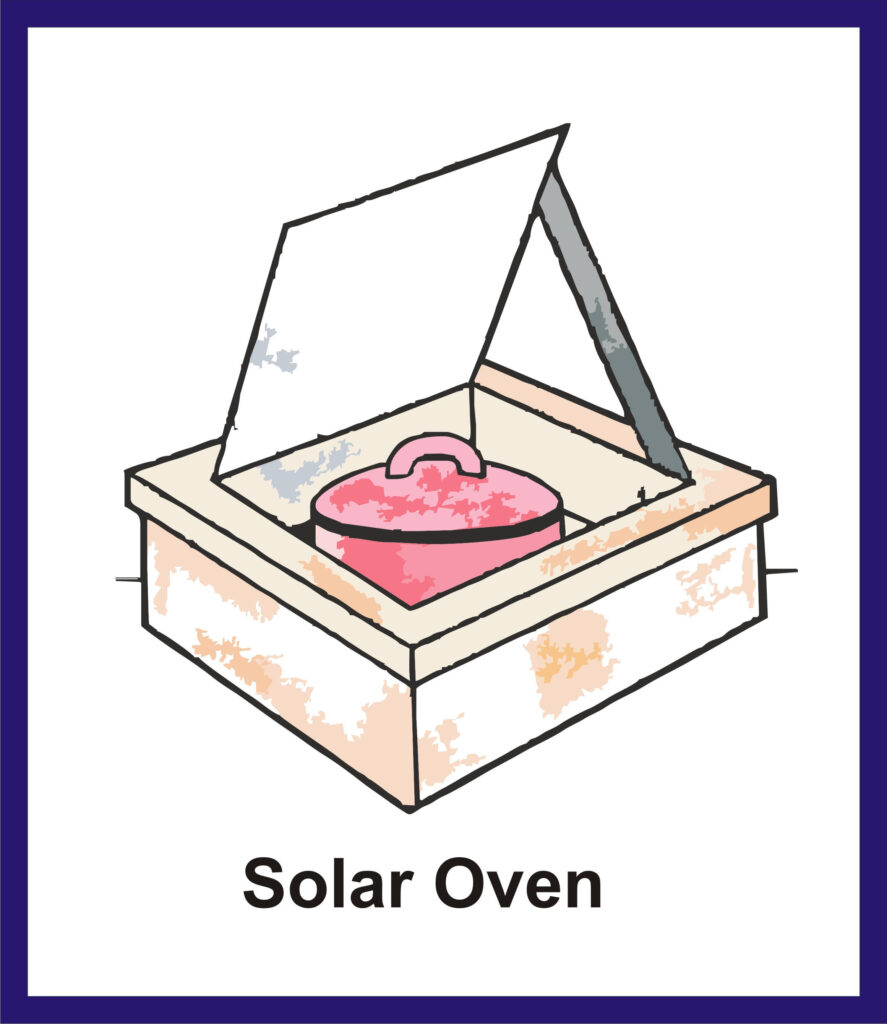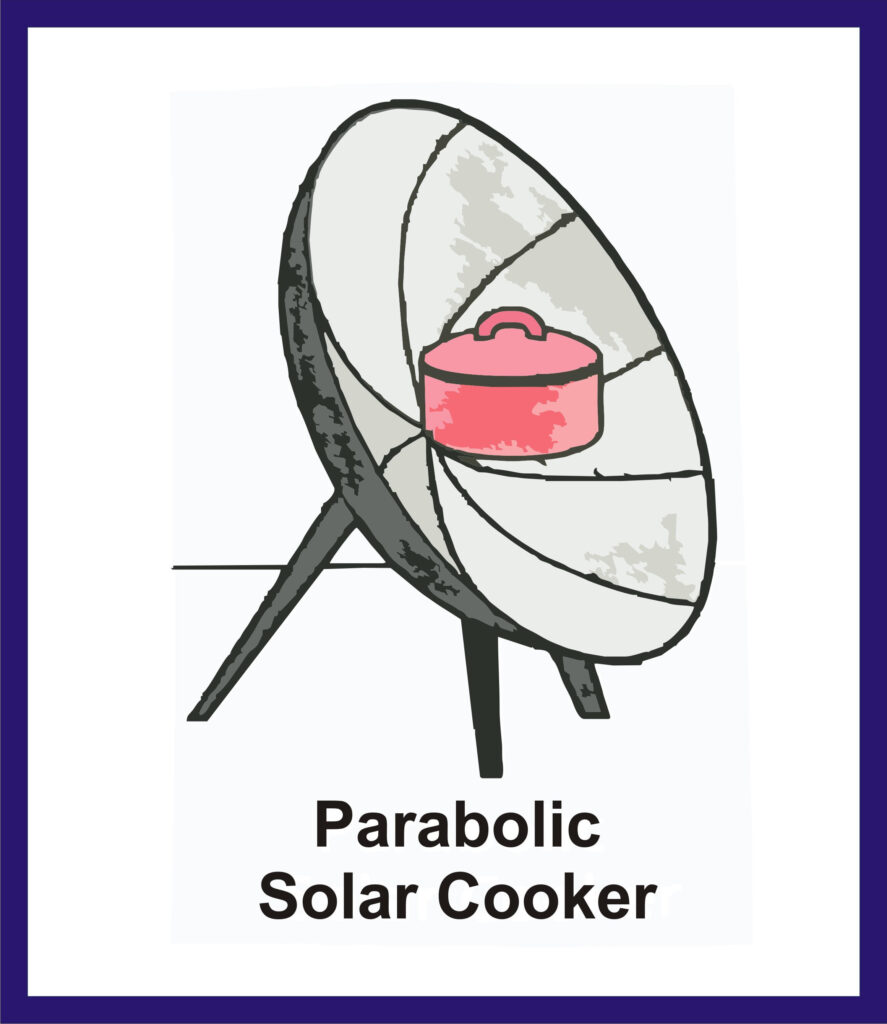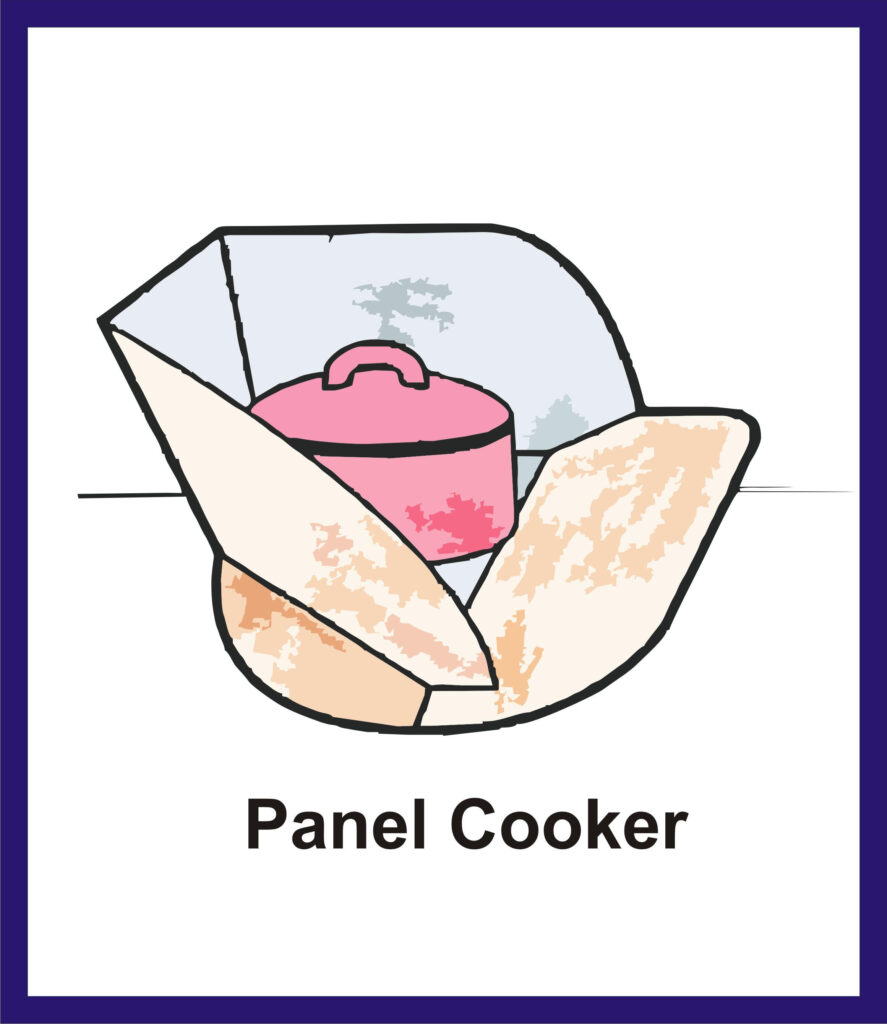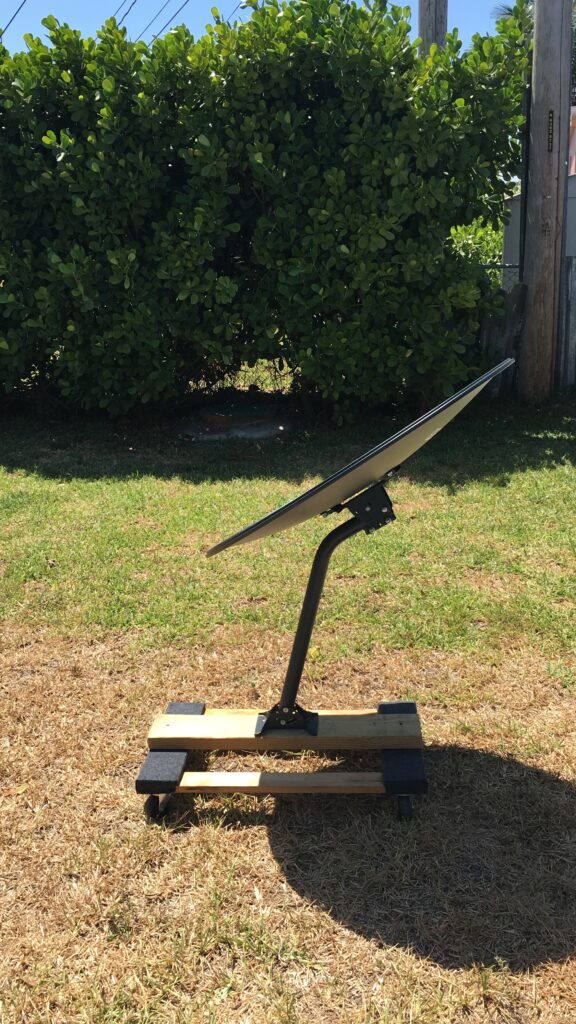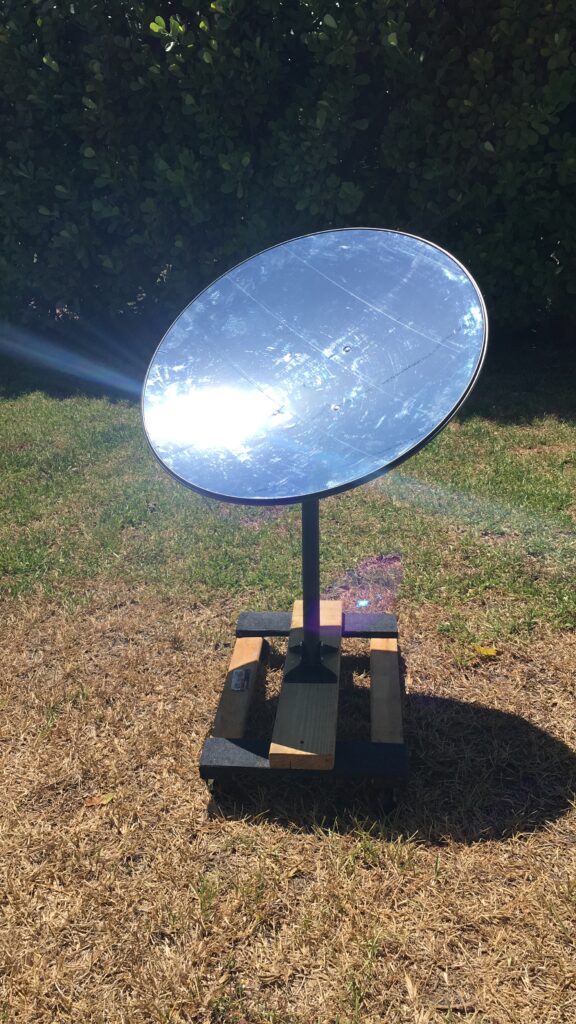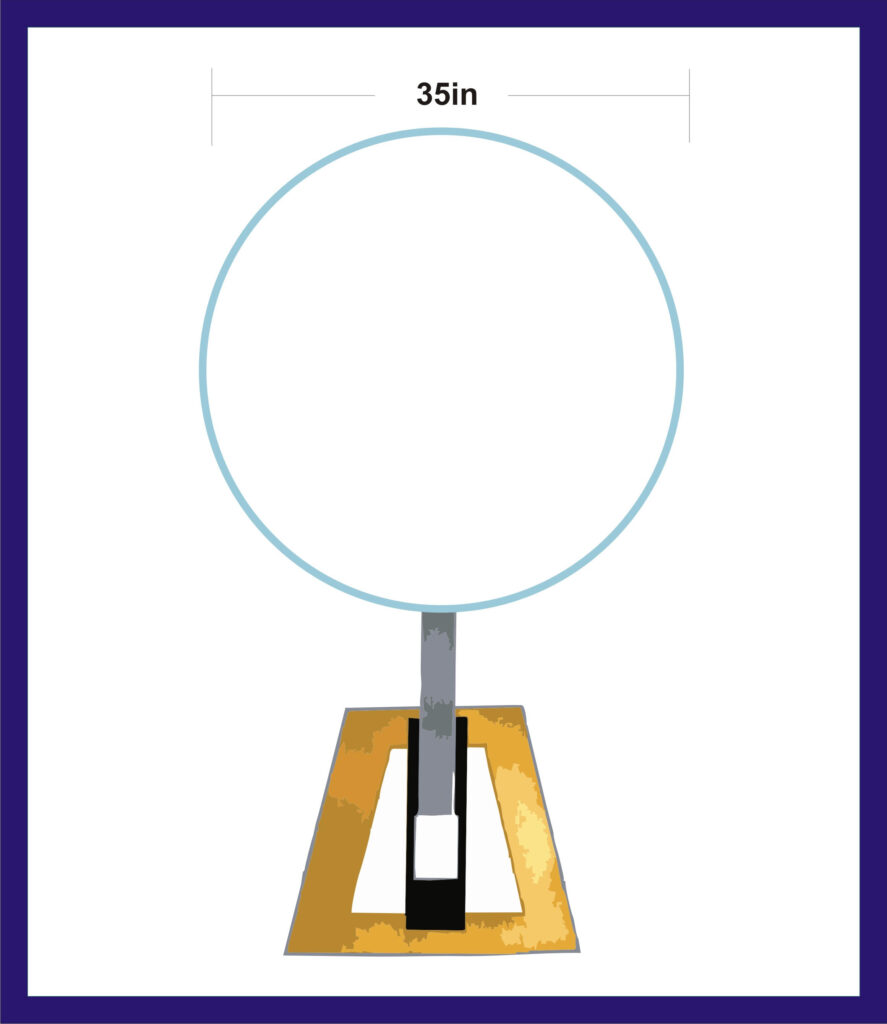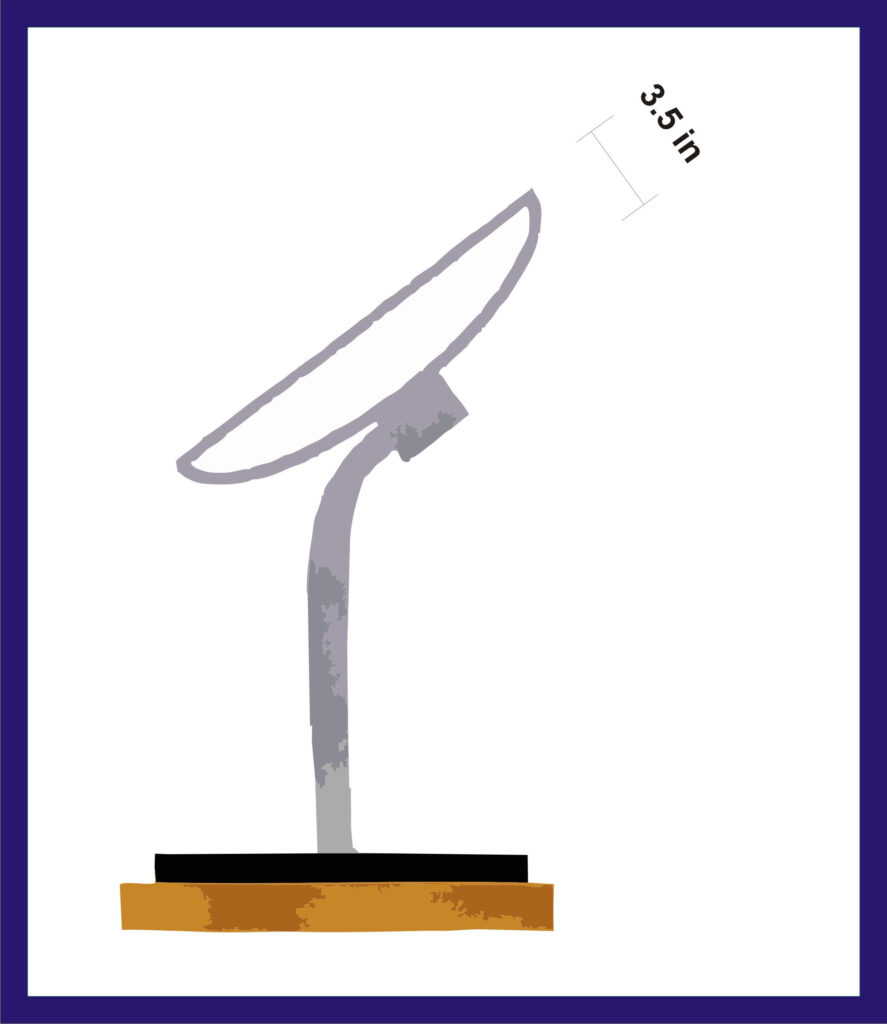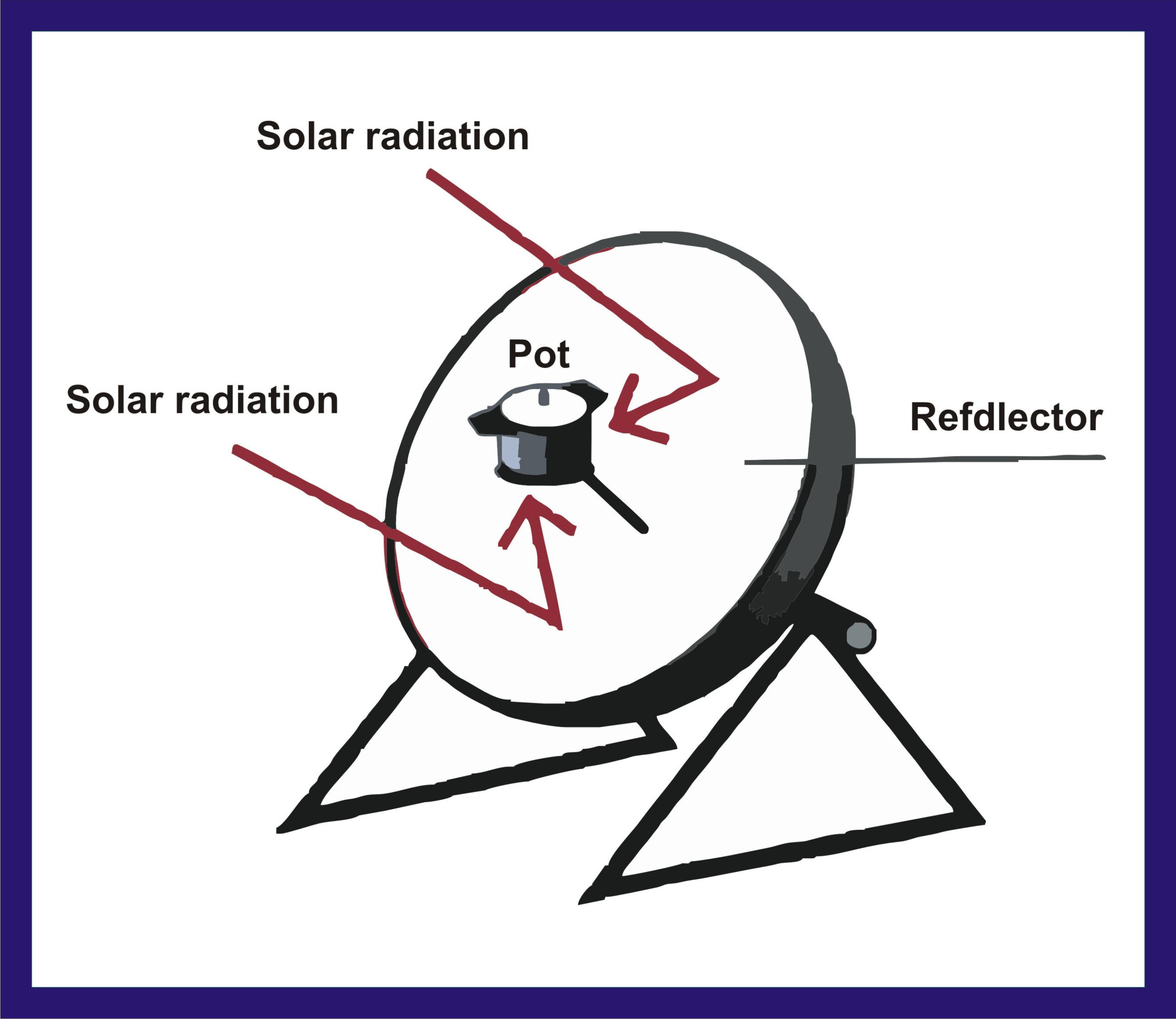
Parabolic Solar Cooker
INTRODUCTION AND BACKGROUND
At Miami Dade College, we wanted to build something useful for people all around the world. Everyone has to eat but not everybody cooks the same way. We wanted to make something that would advance cooking while relatively easy to manufacture and efficient in cost. After visiting Jeff Miller – Program Leader of Engineering – to ask for advise, we walked away with the recommended idea of a solar cooker. We then proceeded to build a solar powered cooker that anyone around the world can build using basic materials and sun light. This cooker uses a parabolic shape to reflect the sun’s rays into the parabolic focus or focal point; the area where the sun’s rays reflect to create enough heat and rise to a temperature high enough to evaporate water. We tried cooking eggs, made coffee and even burnt wood to observe how much heat the dish reflects onto the cooking area. To build our idea, we acquired a satellite with a diameter of 35.5 inches, then we glued chrome reflective paper on the inside of the parabola. Finally we needed something adjustable as a stand to be able to put the cooking pan so anyone can adjust angle depending on where the sun is during the day for the solar cooker to work perfectly. We used a microphone stand. Don’t forget, sunlight is the cooker’s fuel. A solar cooker needs an outdoor spot that is sunny for several hours and protected from strong wind, and where food will be safe. Solar cookers don’t work at night or on cloudy days.
FUNDAMENTALS OF SOLAR RADIATION
It is interesting to consider that the source of all solar energy, the sun, is a massive sphere 1.4 million kilometers (0.87 million miles) in diameter, and 150 million km (93 million miles) from the earth. From a point on the earth to the opposite edges of the solar disk is an angle of only about a half a degree. Even though the solar rays spread out radially from the sun in all directions, the earth-sun distance is so great that the rays hitting the earth are considered to be parallel. The surface of the sun is about 5500°C (9900°F). At its core, about only 3% of its total volume, it is about 10 million°C (18 million°F) because of a continuous nuclear reaction (fusion) converting hydrogen into helium. The sun is approximately 80% hydrogen and 18% helium, and it is consuming hydrogen at a rate of 4 million tons per second. There is no worry about the depletion of its hydrogen fuel, however; 10 million years from now only 1% of its present hydrogen fuel will be consumed. From the sun, the earth is but a tiny spot in the cosmos, and receives only one billionth of the sun’s total radiation. This radiation, or solar power reaching the earth outside its layer of atmosphere, or extraterrestrial is about 1.7 *10^14 kilowatts (or 4 *10^15 kilowatt hours per day). In terms of power per area, called solar flux (e.g., watts per square meter, W/m^2), the earth outside of the atmosphere receives a flux of about 1353 W/m^2 , which is called the solar constant. This radiation flux changes several percent over the course of a year because of small changes in the earth-sun distance.
MATERIALS
Satellite with stand
Reflective chrome paper
Small metal grill
Pan for cooking
Coffee distiller
Eggs
Wooden dolly
Microphone stand
2*4*24 inch wood plank
PROCEDURE
First of all we need the sun. Check the weather, hopefully there’s no clouds. Then take the parabolic cooker outside and point the satellite south. Use the 2 by 4 inch plank to find the focal point which is about 25 inches from the vertex of the parabola (between the center of the satellite and the sun). Once the focal point has been found, the wood will instantly burn from a concentrated beam of heat reflecting from the sun at an exponential rate. That beam must then be pointed at the pan, pot, coffee distiller or anything you’d like to heat. Grab microphone stand with grill attached and just adjust height to match the focal point. Next, place 2 by 4 inch wood plank over the grill to make sure it catches fire. If so, you have completed the alignment process hence are now ready to cook. Keep in mind, the same way the sun is always burning, it is also constantly moving so readjust of focal point (towards the sun) will be needed though the cooking process.
THEORY
Mirrors, aluminum foil, mylar, mirror-finish metals, chrome sign vinyl, and other shiny materials have all been used successfully for solar cooking, depending on the type of cooker and the environment in which it will be used. A solar cooker is essentially an unsteady thermal device, unlike, for example a flat plate solar collector heating water. In a flat plate solar collector for hot water, the temperature of the cold water enteringand hot water leaving are relatively constant; anefficiency can easily be defined as the rate of energy picked up by the circulating water divided by the power of the solar radiation falling on the collector area. Such an efficiency would be between 0 and100%. In the cooker, initially cold material food and pot begins to receive heat, and the temperature begins to rise. As time goes on, the rate of temperature rise slows, and eventually the temperature closely approaches a steady constant temperature.The cooker is kept at this temperature for an additional time sufficient to cook the food. When the solar flux varies during the heating up or cooking time periods, that contributes even more to the unsteady nature of the solar cooking process.
FORMULA
Area = (π/2h)[√(d^2/4+p^2)+p]
p = d^2/8h
d = 2r
h = height
DATA
- Area = (3π/7)[47.12+43.75)
A = (3π/7)(90.87)
A = 122.35 inches^2 - Depth: [3.5 inches]
- Diameter [35.5 inches]
- Parabolic focal point: [24-26 inches from center of satellite]
- Time of the day 77°F
- COOK TIME: Coffee 5min 30sec/ Eggs about 9 minutes/ Wood burns almost instantly.
- Wood heats up to approximately 212°F (100°C) evaporating the moisture in it and breaks down converting the fuel gases at nearly 575°F (300°C)
- From 575°F to 1100°F (300-600°C) the main energy in the wood is released when fuel vapors containing 40% to 60% of the energy burns.
ANALYSIS
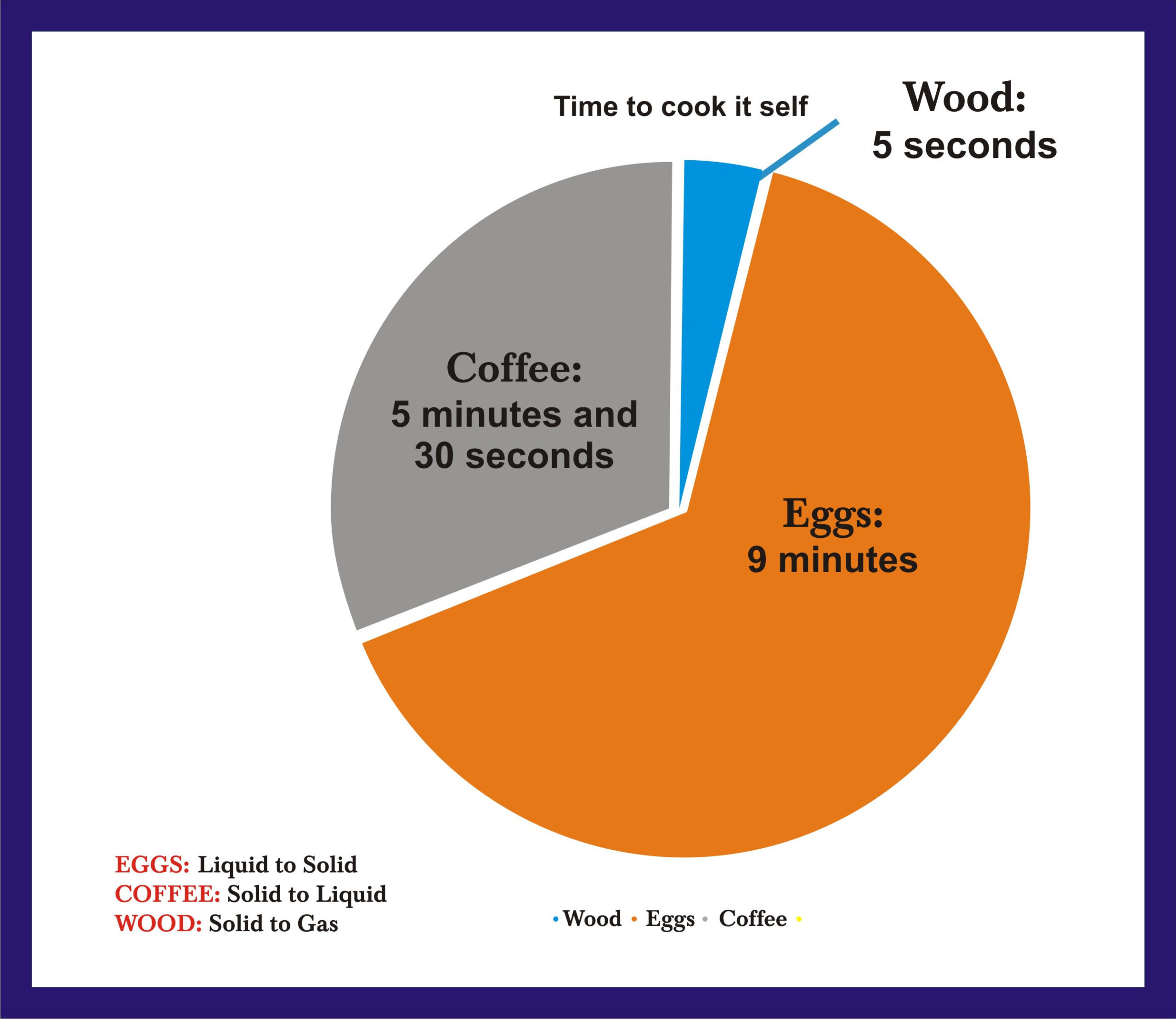
The solar cooker needed to bet set up with the right measurements and focus point directing the sun ray’s to be able for our experiment to function properly. Since we used three different objects as our testers, we set up data regarding how long each took to burn, the physical stage each began and ended with, and we used the burning point of wood to get a realistic estimate of the temperature the satellite dish was projecting for wood to burn instantly. Cooking time of each testing object was different regarding at what time it started sizzling or reaching boiling point; for coffee it just took 4 minutes and 30 seconds from a powder to a liquid cup of coffee ready to drink. The second test was a little different, nothing appeared to be happening until around thirty seconds sizzling started to appear but took 9 full minutes make scrambled eggs on a pan using a satellite dish as the heating mechanism. Lastly, we wanted to experiment with a strong piece of wood and realized that wood starts to heat up instantly, creating a flame & easily showing sublimation occurring.
CONCLUSION
Sunlight-to-heat conversion occurs when photons (particles of light) that move around within light waves interact with molecules moving around in a substance. The rays emitted by the sun have a lot of energy in them. As they strike matter, whether solid or liquid, all of this energy causes the molecules in that matter to vibrate generating heat. This experiment had one main goal: to create something that could be useful in everyday lives for humans, that was practical, easy to make and convenient for anyone any where. With the need of no electrical input; using a satellite dish (for it’s parabolic shape), some reflecting shinny paper which directs sunlight in order to generate heat for cooking, grilling and frying. Solar cooking is the simplest, safest, most convenient way to cook food without consuming fuels or heating up the kitchen. For hundreds of millions of people around the world who cook over fires fueled by wood or dung, and who walk miles to collect firewood or spend much of their meager incomes on fuel, solar cooking is a clean, economical alternative. For millions of people who lack access to safe drinking water and become sick or die each year from preventable waterborne illnesses, solar water pasteurization is a life-saving skill. The World Health Organization reports that in 23 countries 10% of deaths are due to just two environmental risk factors: unsafe water, including poor sanitation and hygiene; and household air pollution due to solid fuel use for cooking. Two billion people rely on wood and charcoal for cooking fuel. Solar cooking alleviates the conflict between their basic needs and the need to preserve earth’s dwindling forests. Biomass and petroleum fueled cooking fires pollute the air. Solar cookers are pollution-free, and, when used in large numbers, may help curb global warming and dimming. Many poverty-stricken families worldwide spend 25% or more of their income on cooking fuel. Sunlight — solar cooker “fuel” — is free and abundant.
